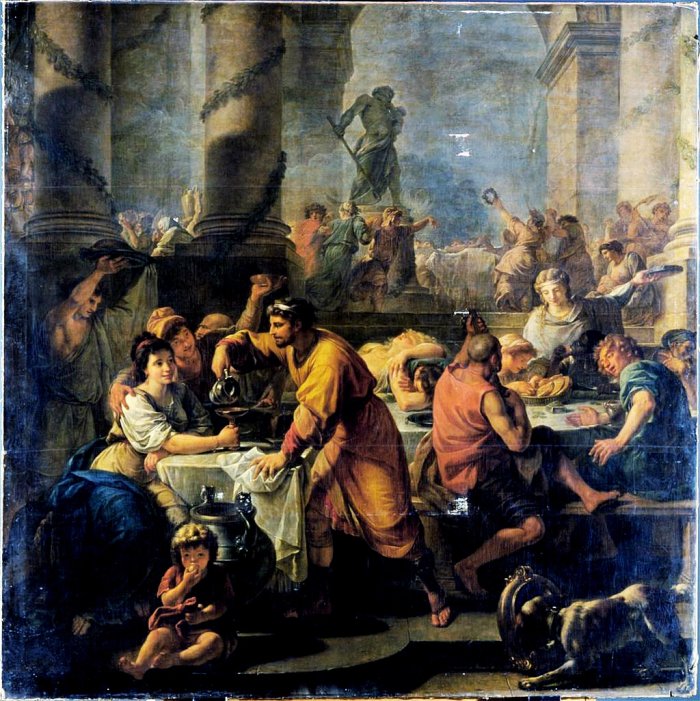Saturnalia Feasts In Roman Empire
A. Sutherland - AncientPages.com - The Romans had many days of religious significance and some of these lasted only a few hours, while others – such as the festival of Saturnalia – could last for almost an entire week and later even more.
Saturnalia by Antoine Callet. Image credit: Themadchopper, Antoine-François Callet - source - CC0 1.0
The Roman calendar included a large number of public holidays, called feriae that increased in number as time went on.
One popular Roman holiday was the Saturnalia held during the winter solstice.
Saturnalia feasts were established in honor of the god Saturn who was a god of agriculture. The holiday included the day of Saturn – the god of seeds and sowing – which was the Saturnalia itself. The holiday began as a farmers’ festival to mark the end of autumn planting and at first, it was held just after the last wheat crop of the year was sown.
Eventually, the Romans settled on December 17 as the date to celebrate the Saturnalia.
Later, the 17th was given over to the Opalia, a feast day dedicated to Saturn’s wife and the goddess of abundance and the fruits of the earth.
Associated with heaven (Saturn) and Earth (Opalia), the Saturnalia ended up combined, according to Macrobius, a Roman Latin grammarian and philosopher, who flourished in AD 400 and whose most important work is the “Saturnalia”, a compendium of ancient Roman religious and antiquarian lore.
The third one, was a feast day celebrating the shortest day, called the bruma by the Romans. The Brumalia coincided with the solstice, on 21 or 22 December.
Ave, Caesar! Io, Saturnalia! Sir Lawrence Alma-Tadema - 1880 Akron Art Museum (United States) Painting - oil on panel. Image credit: Lawrence Alma-Tadema - source - Public Domain
Thus, the holiday became a seven-day-long festival for the Roman people. Later, the emperor Augustus who ruled from 27 BC-AD 14, shortened the Saturnalia to a three-day holiday, as it was causing chaos in the people’s working days.
It worked for some time but Caligula who ruled AD 37–41, extended it again to a five-day holiday. By the time of Macrobius, the Saturnalia was an almost two-week holiday.
The first Saturnalia was in 497BC when the Temple of Saturn in Rome was dedicated. As with so many Roman traditions, the origins of the Saturnalia are lost to the mists of time.
Some of the Saturnalia days included private rituals of worship, but more common were religious rites performed by state officials at mass ceremonies, accompanied by public entertainments held as a part of the religious observances.
The official component of the Saturnalia was on December 17, when the senators performed a mass animal sacrifice at the temple of Saturn, and afterward, there was a huge banquet to which everyone was invited. The rest of the week, the people participated in nonstop parties and feasts. All shops, schools, and other important institutions were closed.
In "Daily Life In The Roman City", Gregory S. Aldrete writes that "normal moral restraints were loosened and everyone was expected to engage in all forms of revelry and fun. This was the only time of year when people were legally allowed to gamble in public. Bands of revelers ran through the streets drinking and shouting "lo Saturnalia..."
Written by - A. Sutherland - AncientPAges.com Senior Staff Writer
Copyright © AncientPages.com All rights reserved. This material may not be published, broadcast, rewritten or redistributed in whole or part without the express written permission of AncientPages.com
Expand for referencesMore From Ancient Pages
-
 Birka Artifacts Shed Light On Vikings’ Daily Life
Artifacts | Jun 24, 2019
Birka Artifacts Shed Light On Vikings’ Daily Life
Artifacts | Jun 24, 2019 -
 Mount’s Bay, Lyonesse, Langarroc: Legendary Submerged Lands And Buried Towns Of Cornwall
Featured Stories | Apr 21, 2022
Mount’s Bay, Lyonesse, Langarroc: Legendary Submerged Lands And Buried Towns Of Cornwall
Featured Stories | Apr 21, 2022 -
 Ancient Jericho – City Of Giants And Home Of The Mighty Gibborim
Biblical Mysteries | Jun 28, 2017
Ancient Jericho – City Of Giants And Home Of The Mighty Gibborim
Biblical Mysteries | Jun 28, 2017 -
 The Hittites – Rise And Fall Of An Ancient Powerful Empire
History | Feb 18, 2019
The Hittites – Rise And Fall Of An Ancient Powerful Empire
History | Feb 18, 2019 -
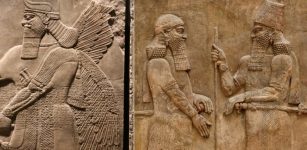 Treasure Trove Of Assyrian Kings Found In Tunnels Excavated And Plundered By Terrorists
Archaeology | Apr 20, 2020
Treasure Trove Of Assyrian Kings Found In Tunnels Excavated And Plundered By Terrorists
Archaeology | Apr 20, 2020 -
 Incredible Technology In Mysterious Huashan Caves, China
Civilizations | Feb 10, 2015
Incredible Technology In Mysterious Huashan Caves, China
Civilizations | Feb 10, 2015 -
 Puzzling Ancient Artifacts Found In Canadian Mountains Defy Explanation – Scientists Say
Featured Stories | Aug 27, 2024
Puzzling Ancient Artifacts Found In Canadian Mountains Defy Explanation – Scientists Say
Featured Stories | Aug 27, 2024 -
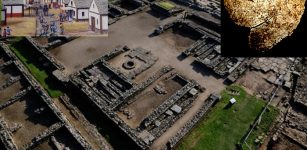 1,400-Year-Old Christian Chalice With Etched Symbols Found In Rubble At Vindolanda Fort, Britain
Artifacts | Sep 1, 2020
1,400-Year-Old Christian Chalice With Etched Symbols Found In Rubble At Vindolanda Fort, Britain
Artifacts | Sep 1, 2020 -
 Fossilized Remains Of A Gigantic Jurassic Pterosaur Unearthed In Oxfordshire, UK
Fossils | Jun 5, 2024
Fossilized Remains Of A Gigantic Jurassic Pterosaur Unearthed In Oxfordshire, UK
Fossils | Jun 5, 2024 -
 Old Bone Links Lost American Parrot To Ancient Indigenous Bird Trade
Archaeology | Nov 8, 2022
Old Bone Links Lost American Parrot To Ancient Indigenous Bird Trade
Archaeology | Nov 8, 2022 -
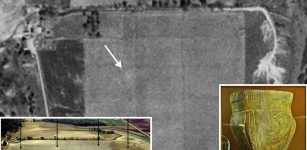 Long-Lost Ancient Burial Mounds Of The Havana Hopewell Culture Re-Discovered In Iowa
Archaeology | Apr 6, 2021
Long-Lost Ancient Burial Mounds Of The Havana Hopewell Culture Re-Discovered In Iowa
Archaeology | Apr 6, 2021 -
 Ancient Roman Joke Inscribed On A 2,000-Year-Old Pen – Discovered
Archaeology | Jul 29, 2019
Ancient Roman Joke Inscribed On A 2,000-Year-Old Pen – Discovered
Archaeology | Jul 29, 2019 -
 Seven Bronze Age Swords And Large Hoard Of Slavic Coins Found In Germany
Archaeology | Dec 4, 2023
Seven Bronze Age Swords And Large Hoard Of Slavic Coins Found In Germany
Archaeology | Dec 4, 2023 -
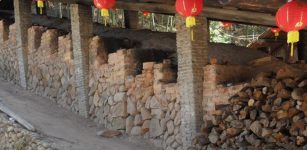 Ceramics Are Telling The Story Of 14th Century Chinese Trade
News | Jun 28, 2023
Ceramics Are Telling The Story Of 14th Century Chinese Trade
News | Jun 28, 2023 -
 Rare Pictish Symbol Stone Found Near The Battle Of Nechtansmere Site
Archaeology | Mar 7, 2022
Rare Pictish Symbol Stone Found Near The Battle Of Nechtansmere Site
Archaeology | Mar 7, 2022 -
 Long-Lost Viking Waterway Leading To Orkney, The Great Norse Empire – Discovered
Archaeology | Aug 5, 2020
Long-Lost Viking Waterway Leading To Orkney, The Great Norse Empire – Discovered
Archaeology | Aug 5, 2020 -
 Ancient Roman Basilica Discovered Under Commercial Building In London, UK
Archaeology | Feb 21, 2025
Ancient Roman Basilica Discovered Under Commercial Building In London, UK
Archaeology | Feb 21, 2025 -
 Enoch – The Initiator – Pre-Flood Messenger Of God
Ancient Mysteries | Oct 5, 2015
Enoch – The Initiator – Pre-Flood Messenger Of God
Ancient Mysteries | Oct 5, 2015 -
 Saint Botvid – Viking Who Was Killed By A Slave He Granted Freedom
Featured Stories | Apr 10, 2023
Saint Botvid – Viking Who Was Killed By A Slave He Granted Freedom
Featured Stories | Apr 10, 2023 -
 Mini-Pyramid Discovered In South Saqqara, Egypt
Archaeology | Oct 13, 2017
Mini-Pyramid Discovered In South Saqqara, Egypt
Archaeology | Oct 13, 2017

